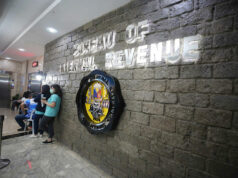Inflation for poor households eases to two-year low in 2019

By Mark T. Amoguis, Assistant Research Head
THE year 2019 saw inflation as experienced by low-income families fall to its lowest level in two years despite picking up in December, the Philippine Statistics Authority (PSA) reported on Friday.
The inflation rate for the country’s bottom 30% income households grew 2.6% in December, faster than 1.7% in November, but slower than 7.2% in December 2018.
That month’s print was the fastest reading in five months or since July’s 3.1% growth.
This brought the full-year print to 3.2%, slowing from 7.2% in 2018. This was the slowest pace since the three percent growth recorded in 2017.
The results compare with the 2.5% headline inflation experienced by the average Filipino household in December and full-year 2019 by the PSA, as well as the Social Weather Stations’s Fourth Quarter 2019 Social Weather Survey results that saw the proportion of self-rated poor families at 54%, the highest in more than five years or since the 55% logged in September 2014.
For the entire year, self-rated poverty rate was at 45%, three points lower than in 2018.
The PSA uses the 2012 base year in computing the headline consumer price index (CPI), while the bottom 30% income households’ CPI uses 2000 prices.
Additionally, the bottom 30% income segment’s CPI reconfigures the model basket of goods to capture the consumption patterns of the poor. For instance, food accounts for 75% of the theoretical basket of goods used by the poor versus the 35.5% weight of an average household.
In December, faster upticks were recorded in the indices of food, beverage and tobacco (FBT), which went up 2.5% from 1.6% in November; fuel, light and water (3.2% from 0.2%); and services (3.1% from 2.8%).
Food-alone index increased 1.3% in December from 0.4% in November, while housing and repairs steadied at 3.7%.
A slowdown was noted in clothing (2.8% from 3%) and miscellaneous items (2.2% from 2.3%).
For full-year 2019, slower increments were noted in FBT (3.4% from 8% in 2018); housing and repairs (4.1% from 4.3%); and fuel, light and water (2% from 8.2%).
Food-alone index likewise slowed 2.7% last year from 7.1% in 2018.
On the other hand, clothing rose three percent from 2.4%, as well as services (3.4% from 2.7%) and miscellaneous items (2.3% from 1.9%).
Sought for comments, Security Bank Corp. Chief Economist Robert Dan J. Roces said that the lower inflation reading for the low-income households last year was due to base effects.
“For the overall reading, easing food prices would explain this downtrend for the bottom income segment, particularly coming from a high base,” he said in an e-mail.
Poor households’ inflation in Metro Manila increased to 2.8% in December from 1.1% in November, taking the full-year reading to 1.7%, slowing down from 6.6% in 2018.
Similarly, those living outside the capital experienced inflation of 2.6% in December, higher than November’s 1.7%, with the full-year pace easing to 3.3% from 2018’s 7.2%.



